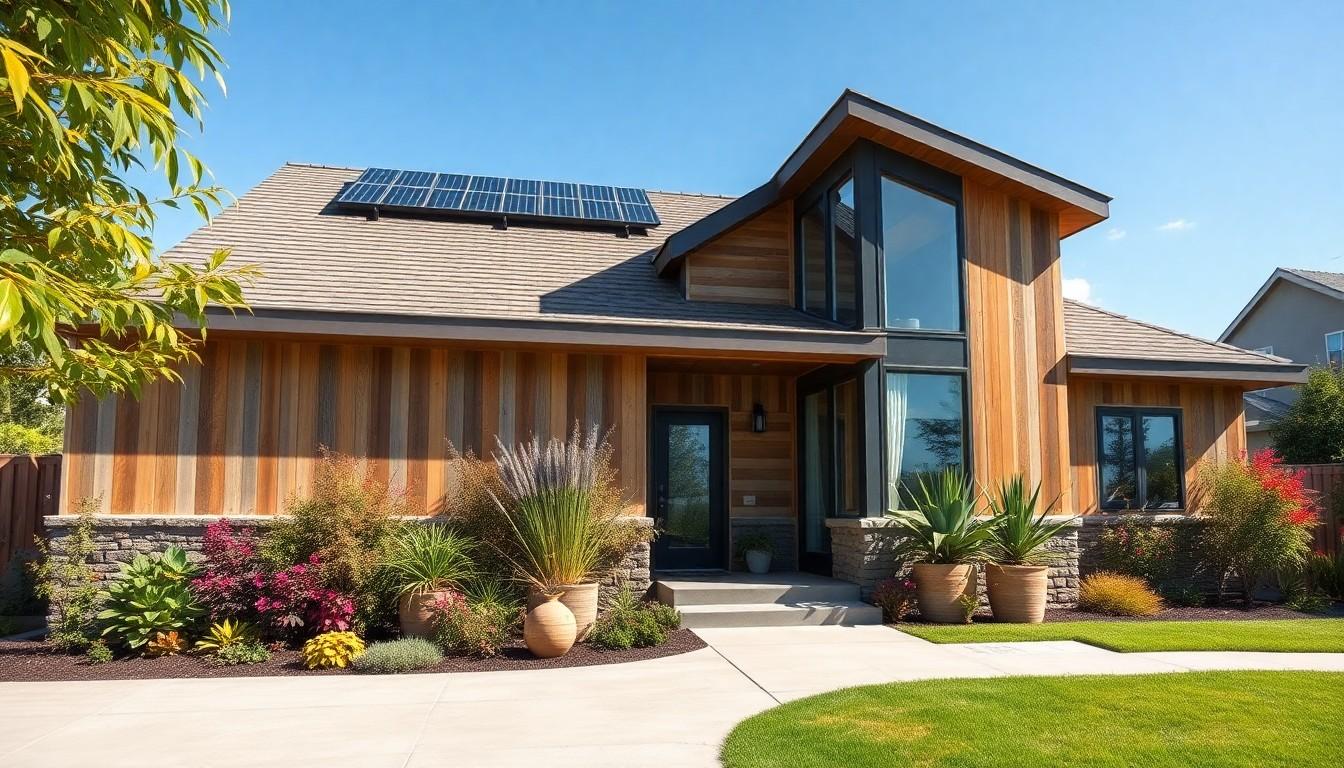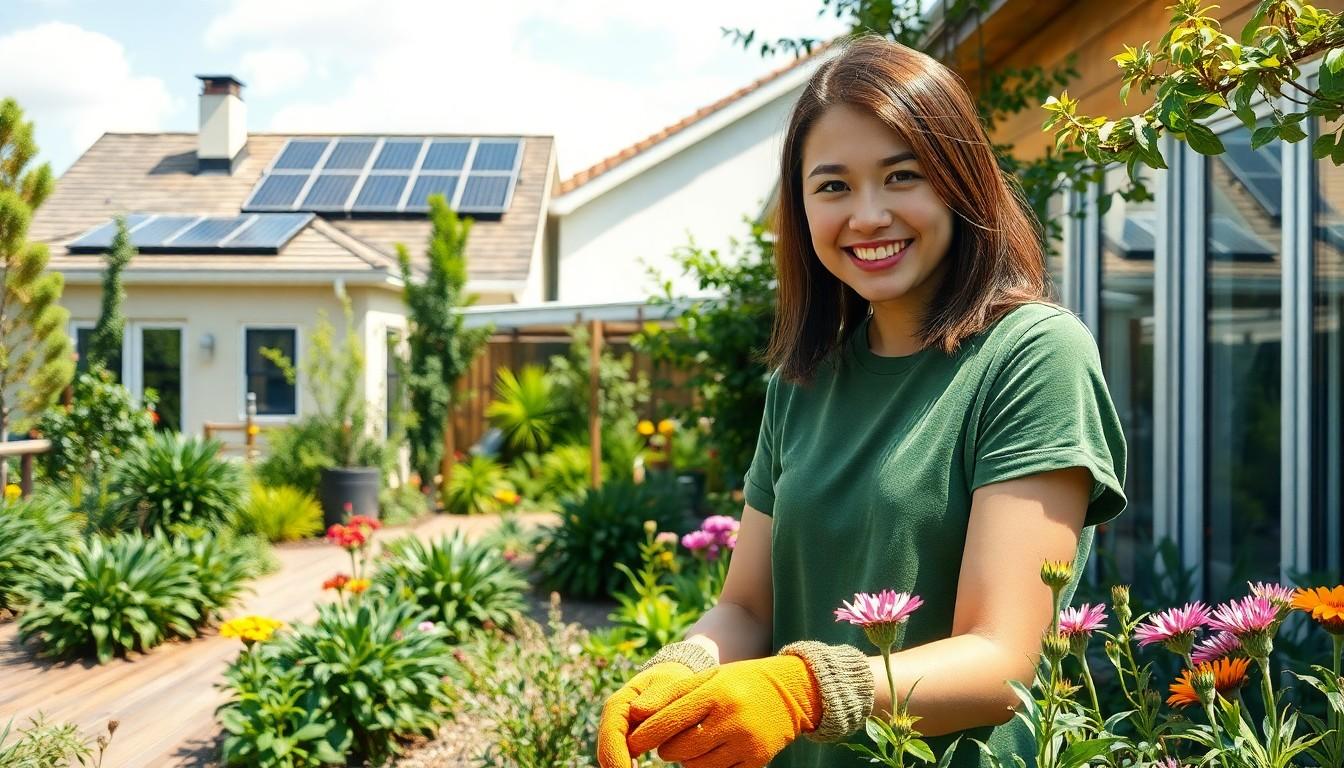Creating an eco-friendly home isn’t just a trend; it’s a lifestyle choice that benefits both the planet and its inhabitants. Imagine a space where your energy bills are lower and your conscience is clear. With a few simple changes, anyone can transform their abode into a green oasis.
how to create an eco-friendly home
Eco-friendly homes incorporate sustainable practices and materials to minimize environmental impact. These homes use resources efficiently while promoting a healthy living environment.
What Is an Eco-Friendly Home?
An eco-friendly home emphasizes sustainability and conservation. Such homes often utilize renewable energy sources like solar panels, ensuring reduced reliance on fossil fuels. Incorporating energy-efficient appliances helps lower energy consumption. Natural materials, including bamboo and reclaimed wood, enhance the ecological footprint. Additionally, effective insulation reduces heating and cooling needs, further minimizing energy use.
Benefits of Eco-Friendly Living
Eco-friendly living results in numerous advantages. Lower utility bills provide immediate financial relief and long-term savings. Enhanced indoor air quality improves health for residents by minimizing toxic materials. Eco-friendly practices contribute positively to the environment, reducing carbon emissions and waste. Moreover, increased property value often accompanies eco-friendly upgrades, making homes more appealing in the market. Fostering a sustainable lifestyle encourages community awareness and involvement, driving collective action for environmental protection.
Essential Elements of Eco-Friendly Homes

Eco-friendly homes focus on sustainability and resource efficiency. Several key factors contribute to achieving this goal.
Sustainable Materials
Sustainable materials significantly reduce a home’s environmental footprint. Common materials include bamboo, reclaimed wood, and recycled metals. These options minimize deforestation and promote resource conservation. When choosing materials, prioritize locally sourced products to cut down transportation emissions. Incorporating non-toxic paints and finishes also enhances indoor air quality. Use insulation made from recycled materials to improve thermal efficiency. To further support sustainability, opt for furnishings crafted from eco-friendly materials. Implementing these choices fosters a healthier living space while protecting the planet.
Energy Efficiency
Energy efficiency plays a crucial role in eco-friendly homes. Utilizing energy-efficient appliances can lower electricity consumption significantly. LED lighting reduces both energy use and costs compared to traditional bulbs. Installing programmable thermostats ensures optimal heating and cooling, maximizing comfort while minimizing waste. Consider double-glazed windows, as they provide better insulation and reduce heating and cooling needs. Solar panels offer renewable energy solutions that decrease reliance on fossil fuels. By focusing on energy efficiency, homeowners can decrease their carbon footprint, lower utility bills, and contribute to a more sustainable future.
Steps to Create an Eco-Friendly Home
Creating an eco-friendly home involves making informed decisions and taking specific actions. Start by assessing the current state of the home and identify opportunities for improvement.
Assessing Your Current Home
Evaluate all areas within the home to determine energy efficiency. Check insulation quality, including windows and doors, to see if they prevent drafts. Identify outdated appliances that consume excessive electricity. Inspect plumbing systems for leaks that waste water. Conducting an energy audit may reveal additional areas needing attention. Consider whether the home utilizes renewable energy sources, such as solar panels. Document these findings to create a clear improvement plan.
Making Sustainable Choices
Choose materials that promote sustainability in renovations and upgrades. Opt for eco-friendly paints with low volatile organic compounds to improve indoor air quality. When possible, incorporate reclaimed wood or bamboo for flooring and furniture to minimize forest depletion. Select energy-efficient appliances that carry the Energy Star label to reduce electricity costs. Favor products made from recycled materials to support the circular economy. Prioritize local sourcing to decrease carbon emissions related to transportation. Make every choice reflect a commitment to environmental stewardship.
Tips for Maintaining an Eco-Friendly Home
Maintaining an eco-friendly home involves practical measures that ensure sustainability and efficiency. Regular upkeep plays a vital role in preserving the benefits gained through eco-friendly practices.
Regular Upkeep Practices
Regularly check for leaks in plumbing systems to prevent water wastage. Schedule seasonal HVAC maintenance to keep systems running efficiently. Replace air filters every few months to maintain indoor air quality. Inspect insulation and seal any gaps to reduce energy loss. Clean gutters to prevent water damage and more extensive repairs. These simple steps prevent long-term damage and foster a more sustainable living space.
Incorporating Smart Technology
Smart technology enhances energy efficiency significantly. Smart thermostats adjust temperatures based on occupancy, optimizing energy use. Energy monitors track consumption, helping homeowners identify wasteful habits. Smart lighting systems provide automation, ensuring lights are only on when needed. Incorporating energy-efficient appliances with smart features further reduces energy bills. By integrating these technologies, homeowners take proactive steps toward a greener future.
Commitment to a sustainable future
Creating an eco-friendly home isn’t just a trend; it’s a commitment to a sustainable future. By implementing simple yet effective changes homeowners can enjoy a healthier living space while also benefiting the planet. Sustainable practices not only lead to lower energy costs but also enhance indoor air quality and overall well-being.
Regular maintenance and smart technology integration are key to maximizing the advantages of an eco-friendly home. Each step taken toward sustainability contributes to a collective effort for environmental preservation. Embracing an eco-friendly lifestyle fosters awareness and inspires others to follow suit. As homeowners make these choices they play a crucial role in shaping a greener world for generations to come.

